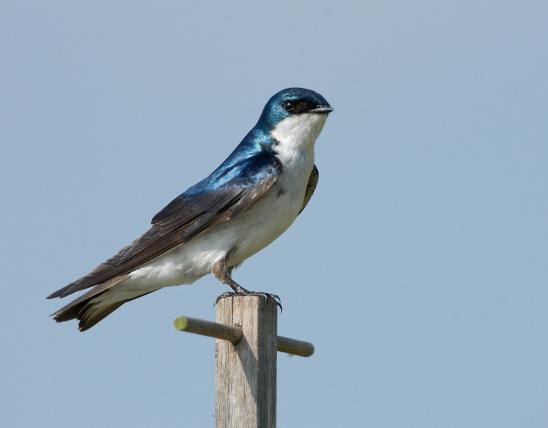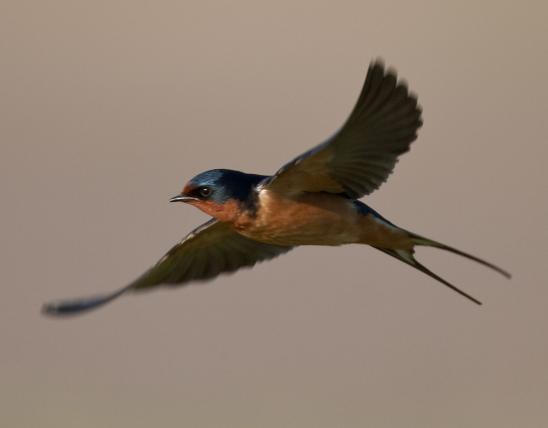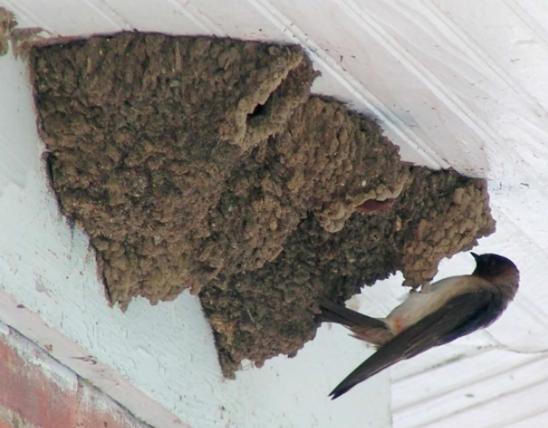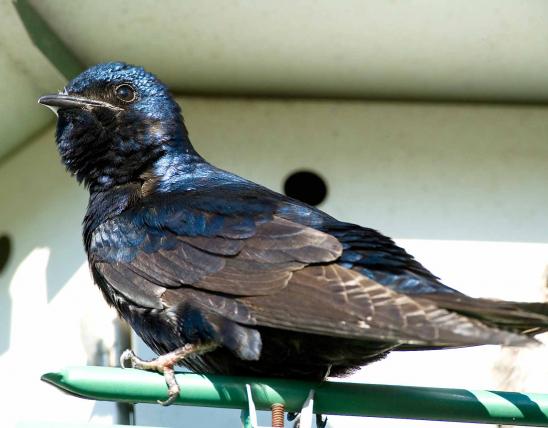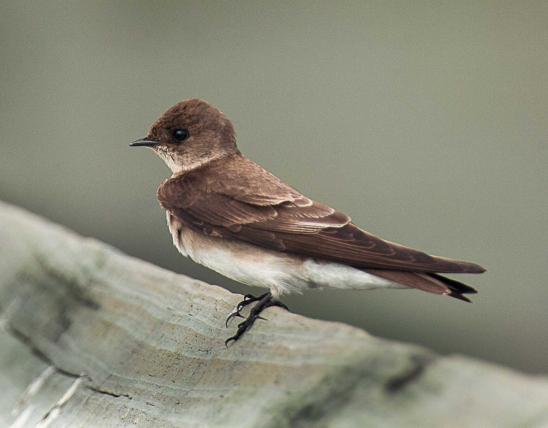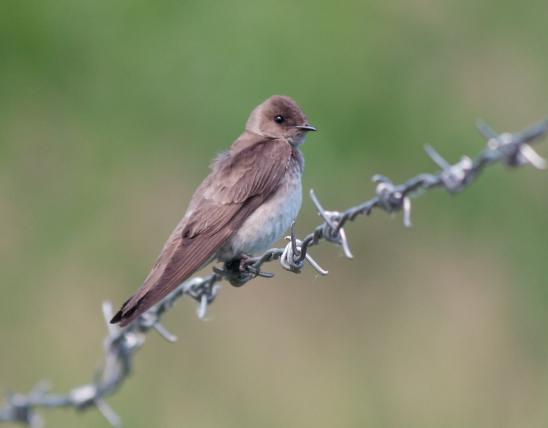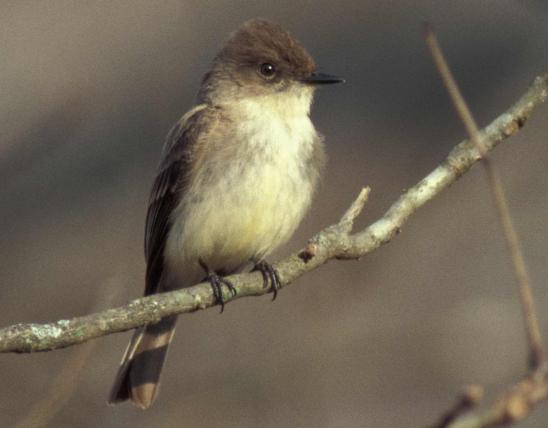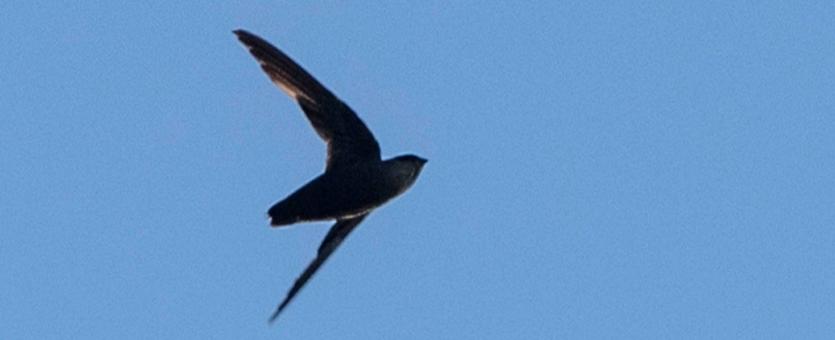
Chimney swifts are brown with a whitish throat and upper breast. The tail is short with a square tip. During the breeding season they are frequently observed flying in pairs or gliding with wings raised in a V. In flight (which is about the only way to see them, unless you look in a chimney flue) they resemble a “flying cigar” with long, narrow, curved wings. They flap quickly, stiffly, and shallowly. The voice is a rapid series of loud chips or ticking sounds.
Similar species: In flight, the various species of swallows can be distinguished from chimney swifts by their wing shape and manner of flying. In swallows, the “wrist” bend of the wings is farther out from the body and more distinct, giving their wings a triangular shape, while the wings of swifts, together, look like an arc or crescent-moon shape. And while swallow wingbeats are graceful and fluid, those of chimney swifts are shallow and stiff.
Length: 5¼ inches (tip of bill to tip of tail).

Statewide.
Habitat and Conservation
Chimney swifts are almost always seen only in flight. They do not perch on branches; they only alight on the vertical walls of chimneys, hollow trees, and similar dark, sheltered areas. Before chimneys and old barns were available, they nested in hollow trees and cliff faces; some still do in some areas. In fall evenings, hundreds of migrating chimney swifts can be seen swirling above a large chimney for an hour before quickly spiraling down into the chimney to roost for the night.
Food
Forages in flight for many types of flying insects, including mosquitoes and other biting flies, termites, true bugs, beetles, members of the ant, bee, and wasp family, mayflies, caddisflies, and more. As insectivores, they perform a welcome service in areas where people live. If the loud twittering of chimney swift young annoys you, remember that their noise represents thousands of annoying insects being transformed into graceful birds that will fly around and eat many more thousand insects.
Status
Common summer resident in cities. Uncommon to rare as breeders in forested regions. Years ago when almost every home and building had a stone, brick, or tile-lined chimney, swifts were abundant. Since the 1960s, the numbers have been steeply declining: Many chimneys are capped to keep out raccoons and other animals, and many others have metal-lined flues to which swifts cannot attach their nests. To combat the decline, many people are building special chimneylike birdhouses for chimney swifts.
Life Cycle
Chimney swifts arrive in Missouri in April. Twig nests are glued together and to the wall of a chimney, silo, cistern, hollow trunk, etc. with secretions from the salivary glands. Each open, tile- or brick-lined chimney likely hosts a swift family each summer. Only one pair nests in a chimney, though the nestlings’ loud chirping makes it seem like more. There are 3–5 eggs; incubation lasts some 15–20 days. Fledging occurs after 15–20 days. In October chimney swifts leave for South America.
Human Connections
Except for the chirping of their young, swifts are welcome, insect-eating guests in our neighborhoods. The small nest eventually falls off and ends up in the fireplace. Be sure to clean your chimney each year for safety, but avoid doing this while the swifts are nesting, from May through August.
Ecosystem Connections
Chimney swifts originally nested in hollow trunks of large trees, but as old forests were cut down, and buildings with chimneys appeared throughout America, they soon relied on human-built nest sites. Now, there are many fewer suitable chimneys, causing a steep decline of chimney swift numbers.
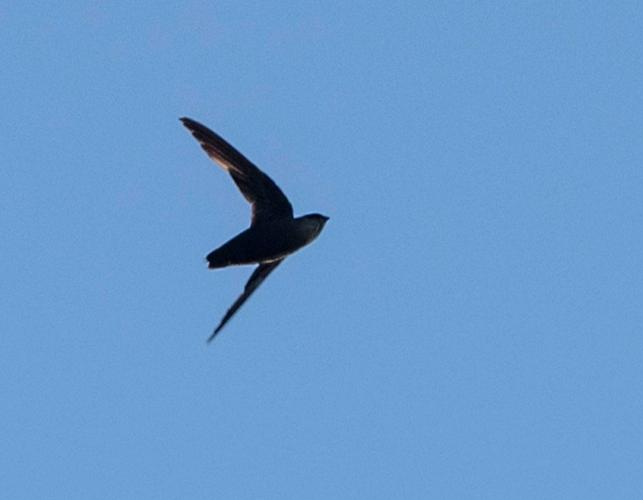
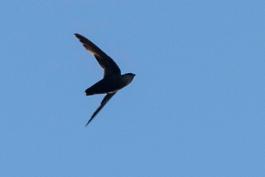
About 350 species of birds are likely to be seen in Missouri, though nearly 400 have been recorded within our borders. Most people know a bird when they see one — it has feathers, wings, and a bill. Birds are warm-blooded, and most species can fly. Many migrate hundreds or thousands of miles. Birds lay hard-shelled eggs (often in a nest), and the parents care for the young. Many communicate with songs and calls.






















